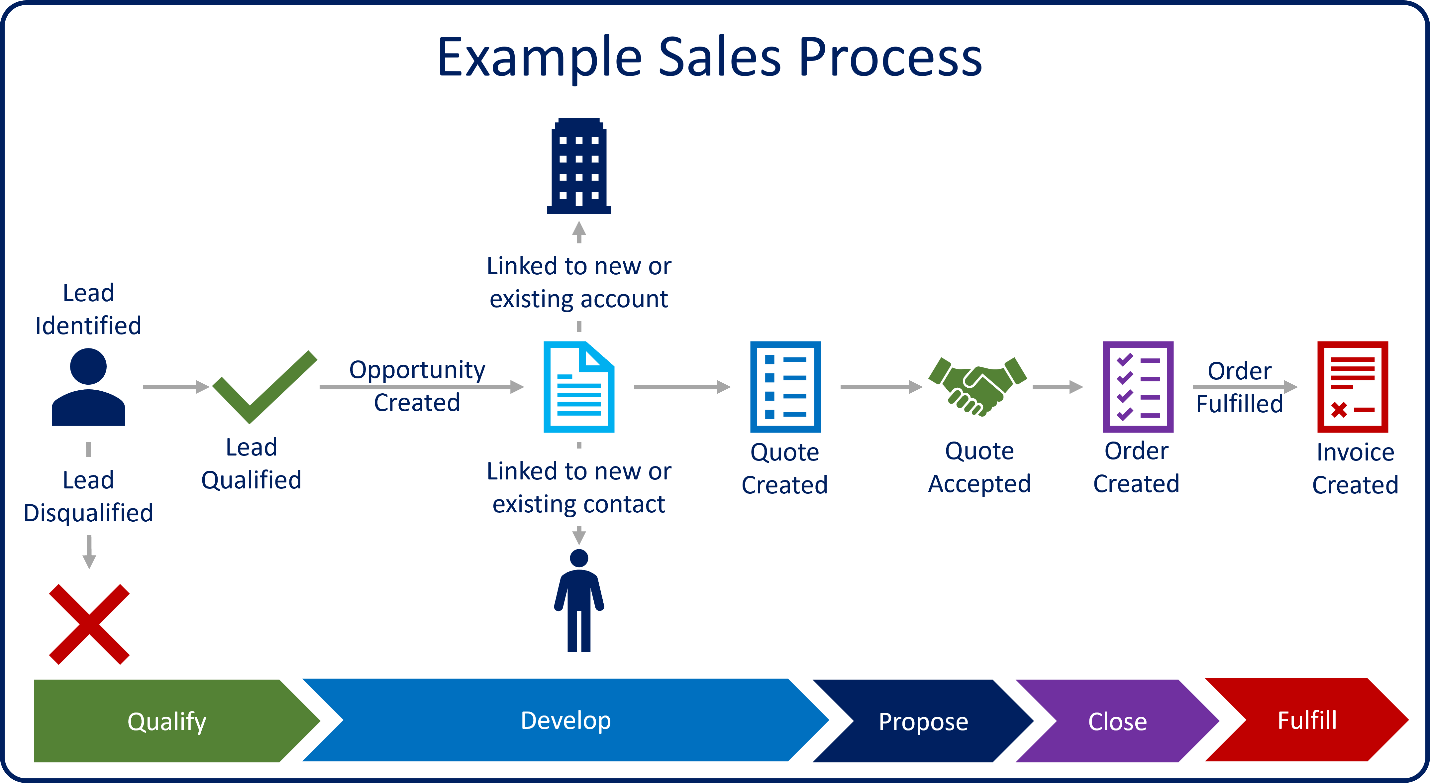Review the sales lifecycle
The goal of any sales organization is to identify prospects and turn them into revenue. For example, how do you take someone you met at an event and turn them into a customer? This process is referred to as a sales lifecycle.
A typical sales lifecycle might resemble the following image:

To help in sales lifecycle management, many organizations use processes that guide sellers throughout the entire sales lifecycle. A sales process ensures that everyone is following the appropriate procedures.
The image shows an example of what a sales lifecycle might look like from beginning to end:

As you can see in the image, different sales record types correspond to different stages in the sales process.
Qualify: A potential lead is identified and qualified.
Develop: An opportunity is created. Other details such as the products and services they're interested in, estimated revenue, and timelines are added to the opportunity.
Propose: A quote is added to the opportunity and formally presented to the customer.
Close: The customer agrees to the quote and an order is generated.
Fulfill: After the order is fulfilled, an invoice is generated to bill the customer.
Dynamics 365 Sales assists organizations with managing their sales lifecycle. In most organizations, this lifecycle begins with leads. Let’s examine how Dynamics 365 Sales helps sellers create, manage, and qualify sales leads.